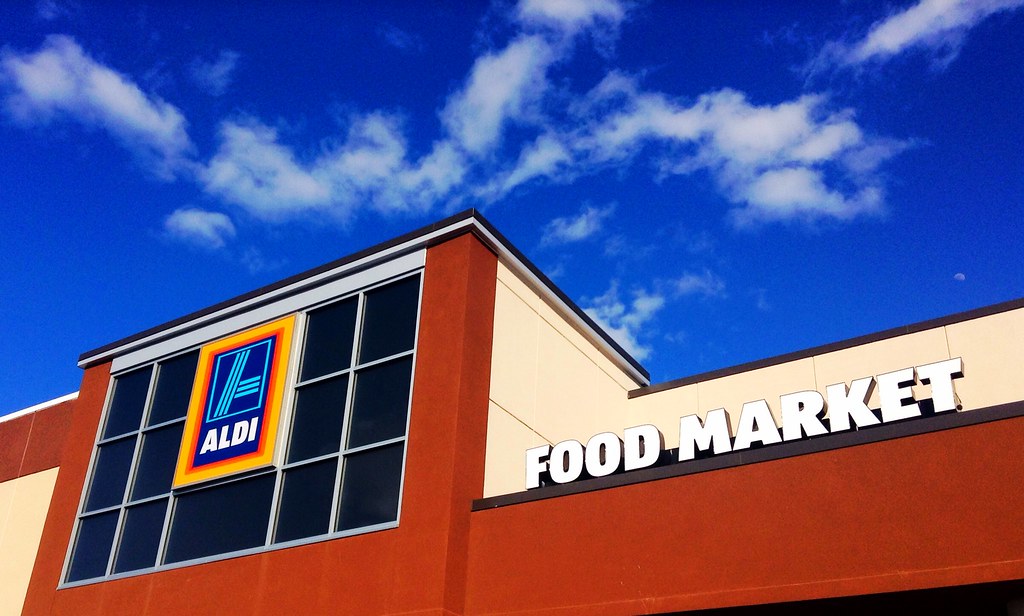
Most people know Aldi for its low prices and quick shopping trips, but there’s way more going on behind the scenes. The reason it all works so smoothly comes down to how Aldi handles its supply chain. It’s simple, smart, and built with the shopper in mind. From the way stores are laid out to how products make it to the shelves, every part is planned with purpose. The little things add up, and that’s what makes Aldi stand out. Here’s a closer look at what really keeps it all running.
Aldi’s remarkable journey began in Essen, Germany, in 1913, when Anna Albrecht opened a small grocery store. After World War II, her sons Karl and Theo Albrecht took over, inheriting a vision of frugality and efficiency that would define the business. By 1948, the Albrecht brothers had expanded the family-run operation to four stores under the name “Albrecht,” pioneering self-service stores in the 1950s. This commitment to simplicity and efficiency would soon redefine the entire industry, growing into a multinational retail giant with over 12,000 stores across 20 countries.
The core of Aldi’s success lies in its unique business model, built on simplicity, cost-efficiency, and unparalleled customer value. Every aspect of its operation is carefully optimized to provide quality products at competitive prices while minimizing operational waste. This unwavering focus on streamlining processes allows Aldi to consistently offer prices that are often up to 50% lower than competitors, a testament to their dedication to putting customer value first.
One of the most striking elements of the Aldi experience is the uniform store layout that greets shoppers in any location. Walking into any Aldi store, you’ll spot the same wide aisles and products still in their cases, free from fancy displays or clutter. This consistent look not only saves on shelving costs but also allows staff to unload goods with remarkable speed, contributing to the overall operational swiftness that defines the brand.

This deliberate design philosophy also significantly benefits the customer. Shoppers learn the floor plan fast, making visits quicker and smoother. From a logistics standpoint, store teams can move through deliveries in the same rhythm across all locations, ensuring that logistics planning remains predictable even as Aldi continues its rapid expansion. This standardization is a quiet cornerstone of their efficiency.
Aldi’s strategic approach extends deeply into its staffing model, which is designed for maximum productivity. The company opts to keep its staff small for each individual store, a direct contrast to many traditional supermarkets. However, the training process for these employees is extensive, and workers are paid a higher-than-average income, fostering a highly efficient and well-compensated workforce that contributes significantly to the store’s smooth operation.
This lean staffing model is complemented by several innovative tactics that engage customers directly in the efficiency process. For instance, Aldi slashes labor and shelving fees by exhibiting products in their original containers, such as shipping boxes, eliminating extra work. The brand’s no-frills shopping experience also allows customers to put their own items away, further saving time and reducing work costs for the company.

Consider the iconic Aldi cart rental system, a prime example of their smart design at work. Here, customers use a 25¢ deposit to unlock a cart from the queue. This clever incentive encourages people to return the cart back to the queue to retrieve their quarter, thereby saving Aldi costs on having store workers manage stray carts. It’s a system that is, quite literally, “by the consumers, for the consumers,” optimizing efficiency through subtle behavioral nudges.
Further accelerating the shopping experience are the massive barcodes slapped onto Aldi merchandise. This design choice speeds up time at the checkout counter, allowing both customers and workers to find the code more easily and process items rapidly. Complementing this, Aldi cashiers are typically seen sitting at the register, a practice that enables them to scan products even faster, keeping checkout lines moving swiftly.
Aldi’s commitment to efficiency even dictates its operating hours. The retailer chooses to close during slower shopping periods, such as evenings or certain holidays, to save money. These lean operating hours align with Aldi’s goal of delivering quality and affordability without sacrificing efficiency, focusing operations on peak shopping times to maximize productivity and minimize unnecessary costs.
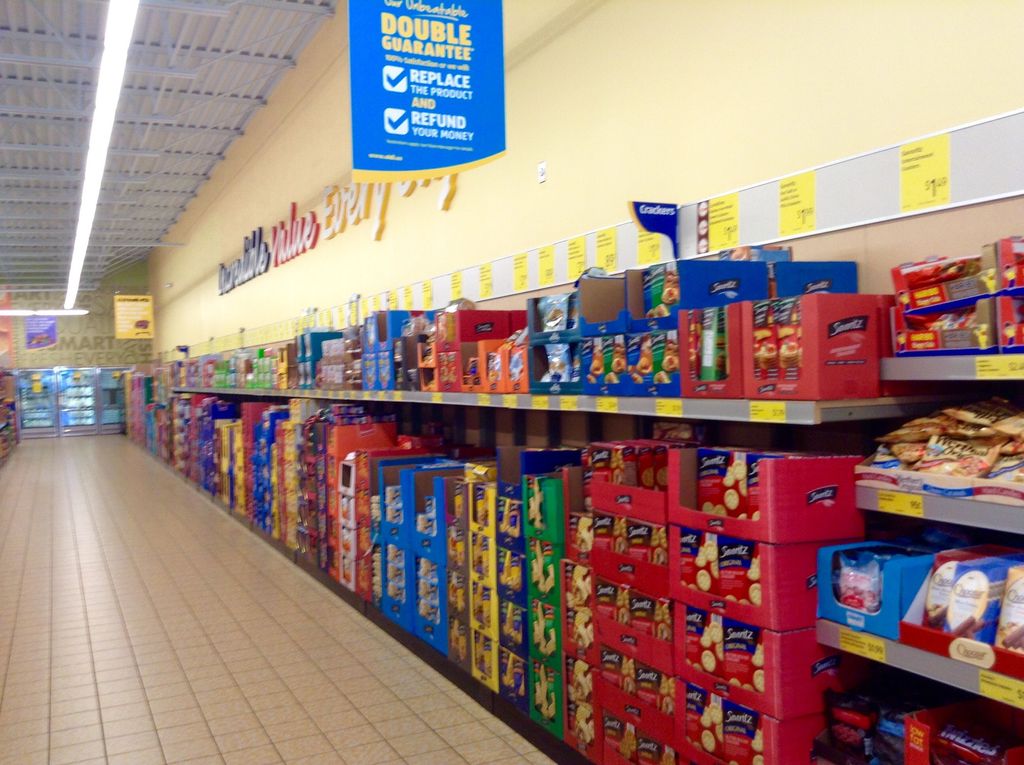
The strategic limitation of product selection is another pillar of Aldi’s efficiency. Unlike traditional supermarkets that carry thousands of products, Aldi limits its inventory to about 1,400 to 1,700 carefully selected items, primarily private-label brands. This approach significantly reduces warehousing complexity and means trucks arrive exactly when stores need refills, a system known as just-in-time delivery and lean inventory.
This curated lineup of bestsellers cuts down on spoilage and keeps working capital free. Fewer stock-keeping units (SKUs) also simplify ordering and distribution steps, resulting in a tight, responsive supply chain that feels steady even in unpredictable conditions. This focused assortment is a deliberate choice that underpins their cost-leadership pricing strategy.
A significant aspect of Aldi’s strategic plan is its emphasis on private-label products, with about 90% of the items in Aldi stores sold under its own brands. By manufacturing its products, Aldi can maintain strict quality standards while keeping prices low. Many of their private-label products are, in fact, made by the same manufacturers that produce well-known name-brand items, offering comparable quality at a fraction of the cost.
These cost-focused packaging and label designs are integral to their pricing strategy. Aldi stores often carry store-brand goods designed in shapes and colors similar to national-brand alternatives. By using basic packaging and minimal decoration, they save on printing and materials, which directly contributes to keeping shelf price tags low without sacrificing the recognizable look of a quality item. Suppliers are encouraged to make packaging work within these limits, which also conveniently fits pallet packing layouts better, further minimizing visual clutter and keeping costs predictable through production and distribution.
Read more about: Aldi’s Secret to Savings: Unveiling the Discount Grocery Magic

Aldi also maintains a regular rotation of seasonal items, a practice designed to limit leftover stock and keep things fresh for shoppers. By bringing in weekly deals and limited-time products, Aldi can test new lines without tying up valuable warehouse space. If something doesn’t sell fast, Aldi simply moves on instead of holding it for months, cutting down on waste and freeing up cash for the next round of exciting products.
The efficiency story extends far beyond the physical store into Aldi’s sophisticated supply chain management. Aldi builds direct ties to its growers and manufacturers, ensuring products go straight to distribution centers. This approach skips extra steps that might slow down delivery or increase costs, and allows Aldi to enforce labor and environmental standards earlier in production, ensuring quality and ethical sourcing.
With fewer hands touching goods, freshness stays better, and supply schedules are tighter. This setup makes volume forecasts more accurate and avoids logjams at the warehouse level, demonstrating a holistic approach to managing the flow of goods from source to shelf with unparalleled precision. The efficiency is a direct outcome of meticulous planning and control.

Smart data tracking with real-time analytics provides the backbone for this precision. Aldi uses process-mining software to spot where stock flow slows or where orders could get held up. The system tracks billions of transactions so management can intervene swiftly when something goes off-plan. For instance, if pallets aren’t packed optimally, the software flags it, and teams adjust routing immediately.
This real-time insight ensures stores are stocked without overordering and prevents cash from getting stuck in poorly managed stock. It’s a digital nerve center that constantly optimizes the flow of products, translating directly into operational savings and reduced waste across the entire network. This proactive approach sets them apart in supply chain management.
Aldi’s warehouse expansions are also designed with efficiency in mind, following a familiar layout with wide aisles and bulk-storage sections that match store setups around the country. Each new regional distribution hub incorporates energy-saving designs, utilizing solar power, LED lights, and efficient refrigeration systems. Beyond shrinking energy bills, this uniform design cuts down on staff training and lets drivers follow consistent drop-off procedures.
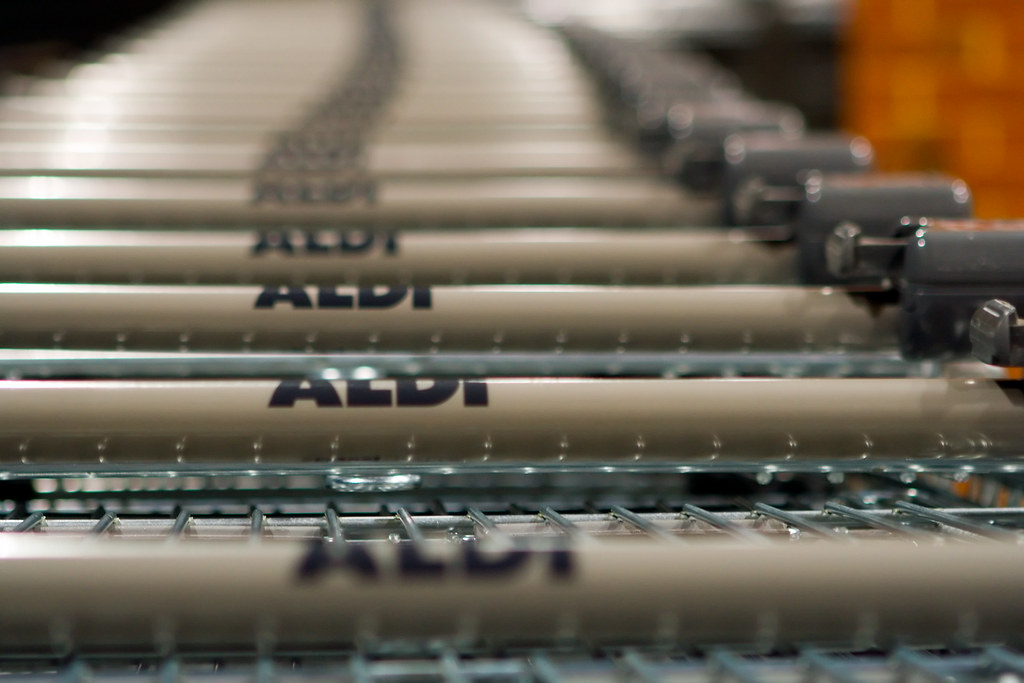
This combination of scale and repeatable builds helps Aldi open or upgrade stores faster, reducing capital investment and speeding up market penetration. The forward-thinking design of their distribution network directly supports the rapid, cost-effective expansion that defines their growth strategy, making every new opening a seamless extension of their established operational model.
Sustainability initiatives are not merely an add-on for Aldi but an integral part of their cost-saving strategy. Encouraging reusable bags and cutting plastic layers directly reduces costs on packaging materials. Aldi has a stated target to reduce plastic use by a fixed percentage within a set year, aligning environmental responsibility with financial prudence.
In-store systems, such as the simple cart-rental deposit setups, spare staff from gathering stray trolleys. Fewer disposable bags, fewer broken carts, and less material disposal all feed into slimmer supply and operation budgets. These “green practices that trim expenses” embody Aldi’s philosophy of making every decision count, both for the planet and for the bottom line.
Live tracking of energy usage in stores further exemplifies this commitment. Temperature sensors in coolers and lights that dim off-peak help Aldi avoid wasted energy every day. If a door gets left open or a fridge isn’t sealing properly, the system sends an alert to staff, allowing them to fix problems right away instead of letting costs pile up over days.
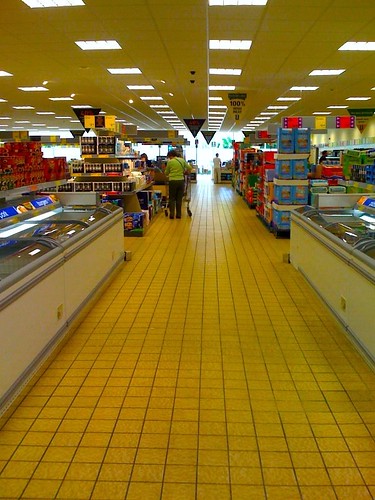
Real-time monitoring of power use keeps utility bills steady and avoids sudden equipment breakdowns, directly contributing to the smooth stocking and operational schedules. This proactive energy management is yet another example of how Aldi leverages technology to maintain efficiency and control costs, reinforcing its reputation as a leader in streamlined retail operations.
Aldi’s commitment to customer satisfaction is also integrated into its efficient model, particularly through its generous two-way guarantee returns policy. Customers can return items for a refund or replacement, and this open door allows store staff to alert suppliers early if one batch isn’t up to scratch. From a logistics angle, this feedback cycle helps tune quality controls at the source, driving tighter item spec adherence.
Over time, this results in fewer mis-shipments and, crucially, fewer costly recalls, leading to fewer complaints and smoother shipments. This policy not only builds customer trust but also acts as an embedded quality control mechanism, ensuring that products meet high standards from the moment they enter the supply chain, ultimately contributing to operational efficiency by reducing errors.

Looking to the future, Aldi continues to innovate and expand its efficient model. Rather than building its own delivery fleet, Aldi works with external delivery services for online orders. Customers place orders through third-party delivery platforms, and local staff pick and pack items directly from stores. This setup removes the need for dedicated warehouse docks or company-owned delivery vehicles, minimizing capital investment.
This partnership approach also allows Aldi to test delivery demand across various regions without heavy financial commitment. Their stores remain organized around regular stocking while delivery orders slot in as a secondary flow, demonstrating adaptability and a willingness to leverage external expertise to meet evolving consumer demands without compromising their core efficiency principles.
Aldi’s strategic plan also recognizes the growing demand for digital retail. They have made significant strides in integrating technology and e-commerce, expanding click-and-collect services that allow customers to order online and collect their groceries in-store. Mobile applications have also been developed to enhance customer experiences, offering promotions, store locators, and digital coupons, all designed to streamline the shopping process.
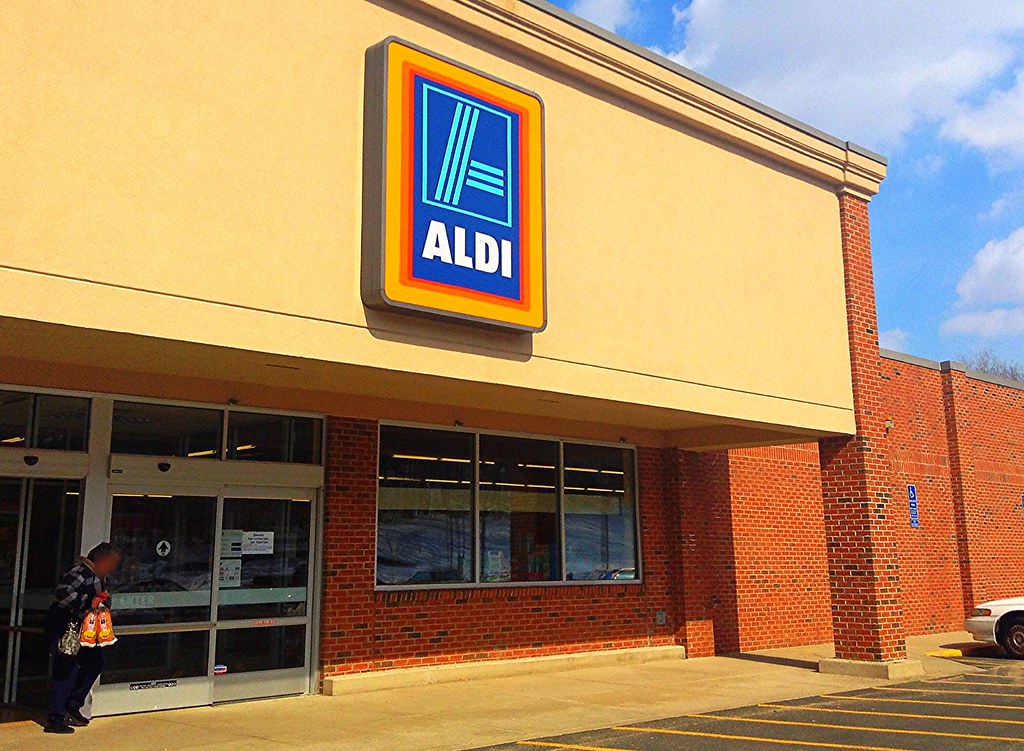
Beyond digital advancements, Aldi is diversifying its product offerings to cater to evolving tastes. While maintaining its core focus on private labels, there’s an opportunity to introduce a wider selection of specialty and niche items, such as plant-based foods, international cuisines, and premium products. This approach aligns with growing trends in health, wellness, and diverse culinary interests, ensuring Aldi remains relevant to a broader audience while keeping affordability at the forefront.
From its humble beginnings in Germany to its current status as a global retail powerhouse, Aldi’s journey is a masterclass in operational efficiency. By meticulously crafting every aspect of its business — from direct supplier relationships and just-in-time inventory to uniform store layouts and customer-centric design elements — Aldi has created a finely tuned machine that consistently delivers on its promise of quality at unbeatable prices.
The brilliance of Aldi lies in its ability to strip away the unnecessary, focusing solely on what provides tangible value to the consumer. It’s a testament to how simplicity, when executed with precision and an unwavering commitment to efficiency, can not only revolutionize an industry but also create a profoundly satisfying and streamlined shopping experience. Aldi isn’t just selling groceries; it’s selling time and savings, one efficient trip at a time.



